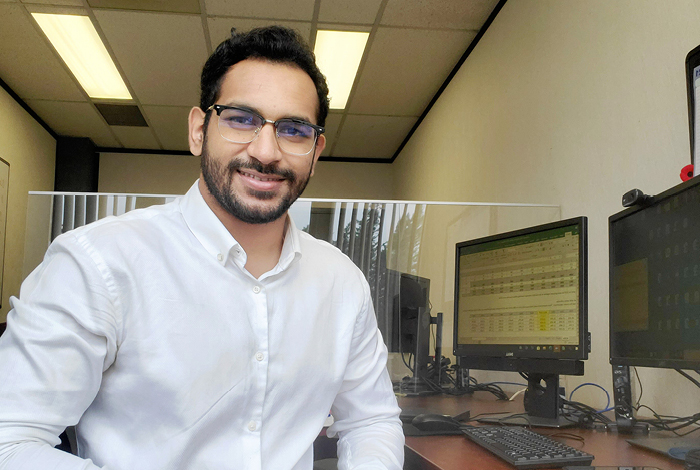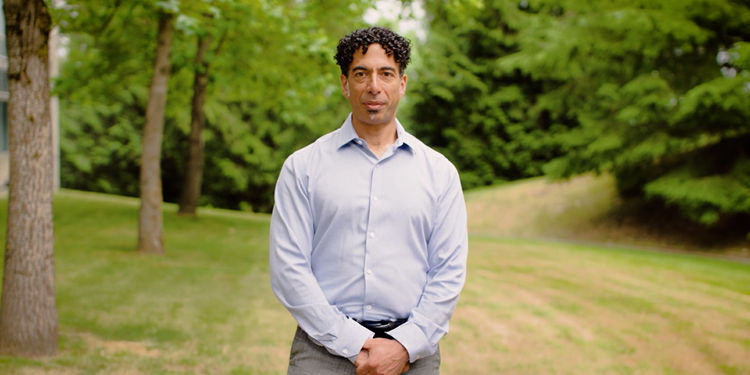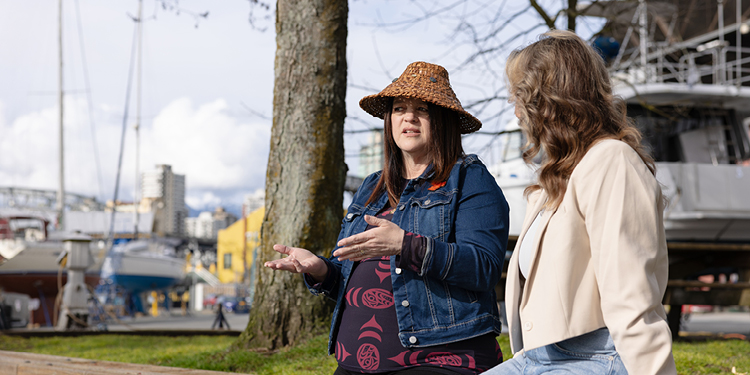FortisBC’s Climate Action Partners: Meet Wasel Rahman
October 6, 2021
Our Climate Action Partners Program works with local governments and organizations throughout B.C. to support the province’s climate action goals.
We work collaboratively with our partners to hire a senior energy specialist who will help their new employer reach their climate action goals, whether that’s lowering emissions, improving energy efficiency and/or fostering lower carbon energy solutions in their communities.
Here's how Wasel Rahman, senior energy specialist with the City of Abbotsford, is taking climate action for his community.
Why did you get involved with the Climate Action Partners Program at FortisBC?
I’m originally from Bangladesh and spent some time in Edmonton before coming to Abbotsford. I immigrated to this country and Canada has given me many incredible opportunities. As a result, I want to give back and help drive my community towards a better future. Nothing happens without collaboration and, through the Climate Action Partners Program, I have an opportunity to collaborate with influential organizations to do meaningful work in climate action.
I’m very passionate about the environment. I received my bachelor’s degree in mechanical engineering in Bangladesh and I did a lot of research focused on renewable energy generation in cropland, as Bangladesh is a crop-based nation influenced heavily by tropical weather and climate. This got me interested in learning how to utilize croplands to generate renewable energy. My pursuit to understand other avenues of renewable energy, such as solar energy, wind energy and biofuels continued through my master’s degree in engineering management at the University of Alberta. I wanted to learn more about what was not just technically feasible, but what was also economically viable.
During my master’s, I was the president of the university’s energy club, and a ‘Sustainability Scholar’ for a municipality in Alberta. That is when I learned I could make noteworthy impacts by working with a municipality moving forward.
This all makes me who I am today and why I joined the Climate Action Partners Program. This program is an opportunity to bring all my passions together.

Can you share more about the work as a senior energy specialist?
My work is dedicated to accelerating and achieving environmental stewardship in the community. The City of Abbotsford has set carbon emissions targets in an effort to mitigate climate change, and I’m proud to work on helping the city achieve these goals.
As a society, I feel we don’t speak enough about energy efficiency, but it’s crucial to achieving climate change goals. A big part of my role is creating and managing relationships with builders and developers, and sharing how we can all work together to make buildings more energy efficient. We want builders and developers to be equipped with the knowledge and expertise they need to integrate climate action with their work – something they get to own. We want them to be involved and know they are an important part of the solution.
I’m also putting my education and experience to use by supporting the Renewable Natural Gas2 (RNG) portfolio within the city. We know that FortisBC repurposes methane for renewable energy, and agricultural waste produces a lot of methane. Abbotsford is big player in agriculture as B.C.’s agriculture capital, so there are many opportunities to produce RNG. I believe we can make Abbotsford an RNG hub, which is really exciting. While I’ve only been in this position for one year, I’m proud of the work we’re doing.
What are the benefits of this work to the residents and community of Abbotsford?
At the city, we’re all working together to support the province’s climate action goals. By building stronger rapport with builders and developers while providing them unique training opportunities on the BC Energy Step Code, we’re better communicating about energy challenges and how to address them safely and economically. Abbotsford residents will definitely benefit from work underway to promote high-performance buildings, which are not only energy efficient, but also improve comfort, health and safety, and building durability. Also, through RNG, this community can utilize existing resources and be proud to produce renewable energy. Best of all, we can mitigate and prepare for future challenges by taking a more holistic approach to energy efficiency. By doing this, we are trying to reduce the adverse impacts and costs of climate change and create a more resilient city.
Anything else you’d like to share?
I just want to say that I recognize that complex problems have complex solutions. Solutions have to be safe, feasible, affordable and sustainable in the long term. Natural gas designated as RNG is a solution that uses the existing gas system to deliver renewable energy. We also need to optimize and efficiently use the resources we currently have at our disposal. Energy efficiency doesn’t always capture headlines, but over 22 per cent of our emissions in the City of Abbotsford come from the building sector. Everyone has a part to play, including the City of Abbotsford, FortisBC, builders, developers and so many others. We’re all working together and doing everything we can.
Connect with us to learn more about being a climate action partner
Our climate action partners are part of a large community of like-minded organizations that are working to support a lower carbon future. We encourage any local governments and organizations who share these values to connect with our climate action partners team to discuss how we can tackle climate action together.
1FortisBC uses the term renewable and lower carbon gas to refer collectively to the lower carbon gases or fuels that the utility can acquire under the Greenhouse Gas Reduction (Clean Energy) Regulation, which are: Renewable Natural Gas (also called RNG or biomethane), hydrogen, synthesis gas (from wood waste) and lignin. FortisBC’s renewable and lower carbon gas portfolio currently includes only Renewable Natural Gas. Other gases and fuels may be added to the program over time. Depending on their source, all of these gases have differing levels of lifecycle carbon intensity. However, all of these gases are lower carbon when compared to the lifecycle carbon intensity of conventional natural gas. The current burner tip emission factor of RNG is 0.27 grams of carbon dioxide equivalent per megajoule of energy (gCO2e/MJ) and the current renewable and lower carbon gas portfolio lifecycle emissions for stationary combustion are -22 gCO2e/MJ. This is below B.C.’s lifecycle carbon intensity threshold of 30.8 gCO2e/MJ as set out in the 2024 Greenhouse Gas Reduction Regulation amendments.
2Renewable Natural Gas (also called RNG or biomethane) is produced in a different manner than conventional natural gas. It is derived from biogas, which is produced from decomposing organic waste from landfills, agricultural waste and wastewater from treatment facilities. The biogas is captured and cleaned to create RNG. When RNG is added to North America’s natural gas system, it mixes with conventional natural gas. This means we’re unable to direct RNG to a specific customer. But the more RNG is added to the gas system, the less conventional natural gas is needed, thereby reducing the use of fossil fuels and overall greenhouse gas emissions.



